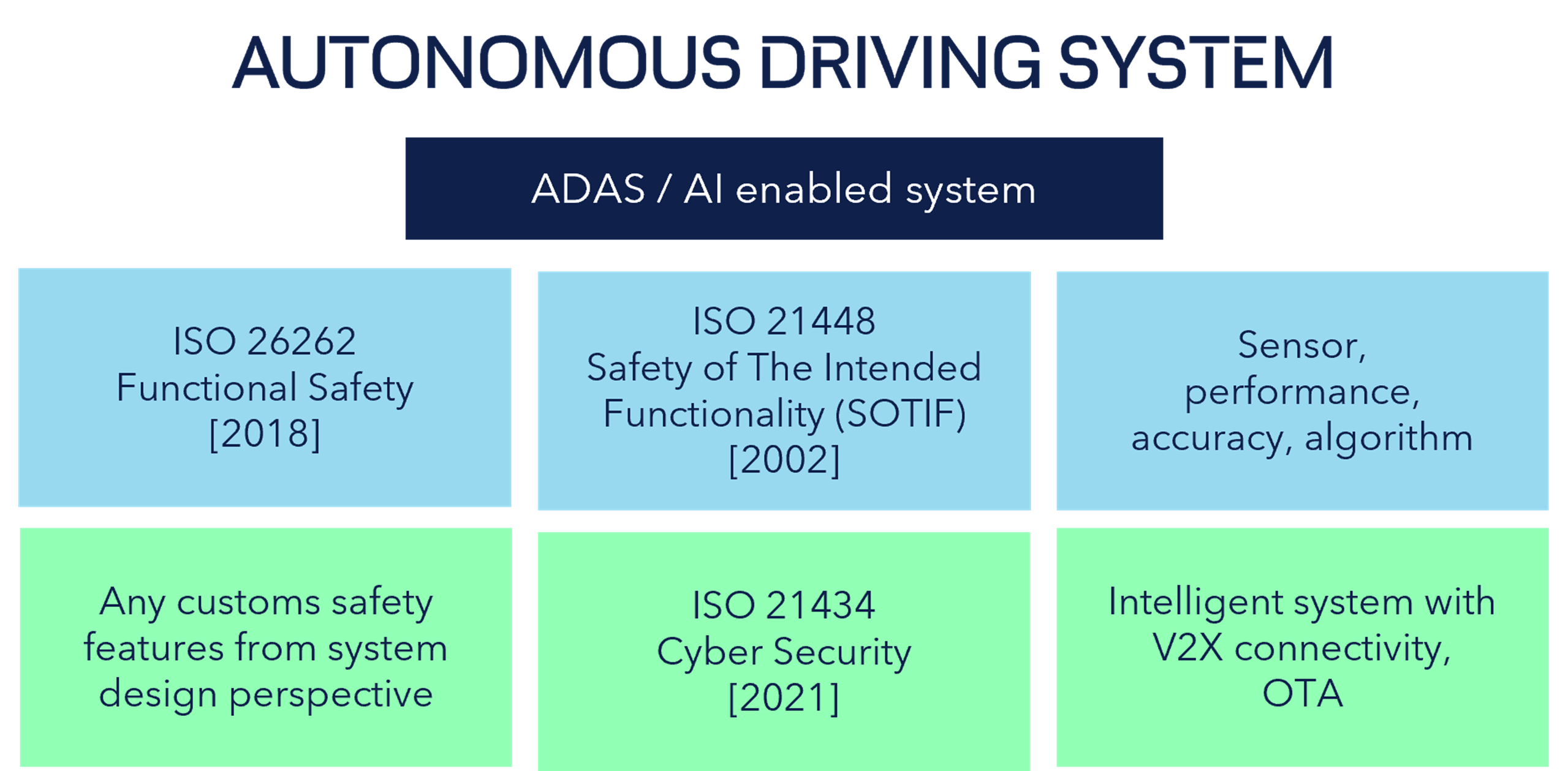Webinar – Achieving ISO 21448 (SOTIF) compliance: Strategies for implementing safety in level 3 automated vehicles
Find out more about the methodology and process of automated vehicle based on ISO 21448 for Autonomous Driving System (ADS) Level 3
The safety of road vehicles is a critical concern for the automotive industry. As vehicle functionalities advance, they increasingly rely on sensing, complex algorithm processing, and precise actuation within Automated Level 1 to Level 5 systems, which encompass both electrical and electronic (E/E) components.

Ensuring road vehicle safety involves avoiding unreasonable risks associated with every hazard related to the intended functionality and its implementation. These risks may arise not from failures but from insufficiencies in specification or performance, defining the concept of Safety of the Intended Functionality (SOTIF). SOTIF, equivalent to ISO 21448 is a relatively new standard that addresses safety in Advanced Driver Assistance Systems (ADAS) and Automated Driving (AD) vehicles. It complements the existing ISO 26262 standard, which focuses on functional safety.
This webinar is tailored to professionals in the field of automated vehicles, including Automated Vehicle Design Engineers (specializing in vehicle/ systems/ HW/ SW), Test Engineers, Process Managers, Safety Managers, Safety Analysts, and individuals with a keen interest in automated driving and related standards.
Agendas Overview:
i. History and concept of SOTIF standard and related standard.
- Safety scheme in mobility sector, differences between FuSa and SOTIF.
ii. Key methodology for SOTIF Automated Driving Systems (ADS) Level 3 design.
- ADS L3 & L4 ADS ISO 26262 and SOTIF approach, SOTIF key development.
iii. Mileage acceptance of SOTIF from hazard behaviour and triggering condition.
- Approach validation of SOTIF applicable systems.
- How to identify complete scenario set for C6/C9 hazard acceptance scenario.
- Mileage acceptance from SOTIF design.
- Evaluation of residual risk due to unknown hazardous scenario.
iv. Guideline of SOTIF approach based on ADS vehicle mass production milestone.
- Approaching ADS mass production, integration of FuSa and SOTIF.
Presenter:
Pang Sung Hoon
Head of Mobility Section, Supply Chain & Product Assurance, DNV Korea
Prior to joining DNV, Sung Hoon held positions at General Motors, the Hyundai Motors group, and Huawei as an Automotive Technical Specialist. With 24 years of experience in the autonomous driving industry, he had been focusing on the area of functional safety for automated vehicles since 2009 and SOTIF since 2017.
Do register your interest for this webinar and we look forward for your participation.